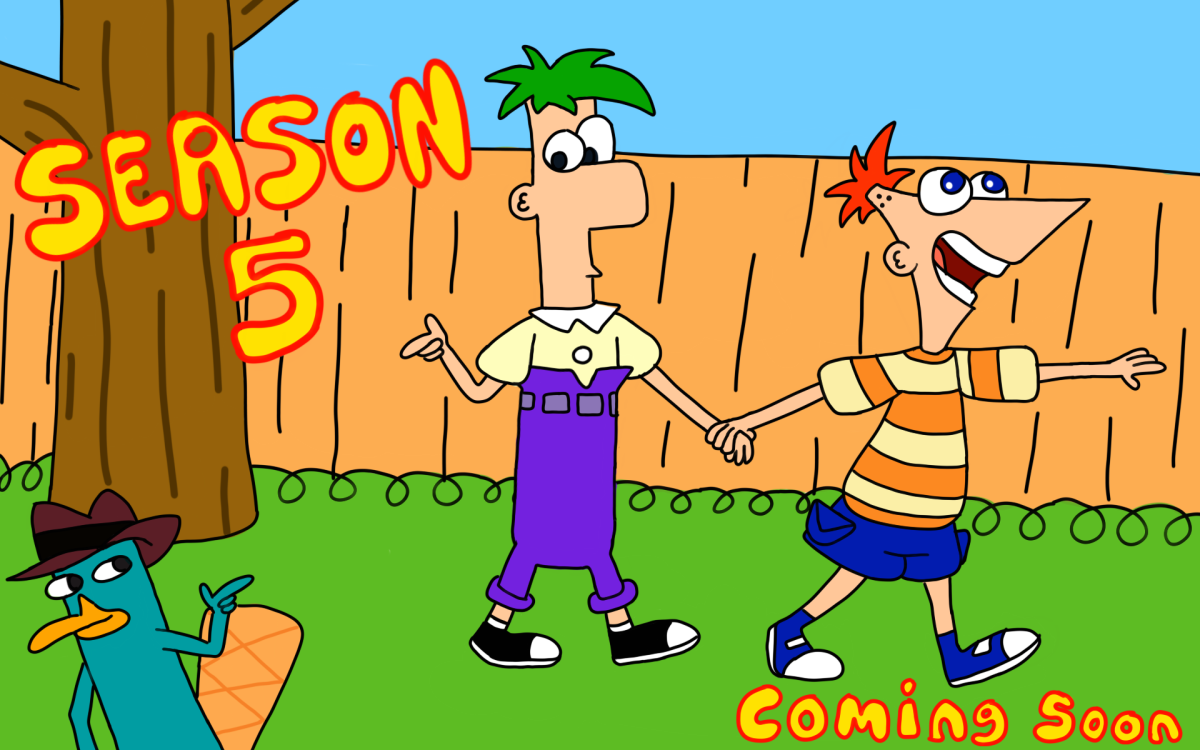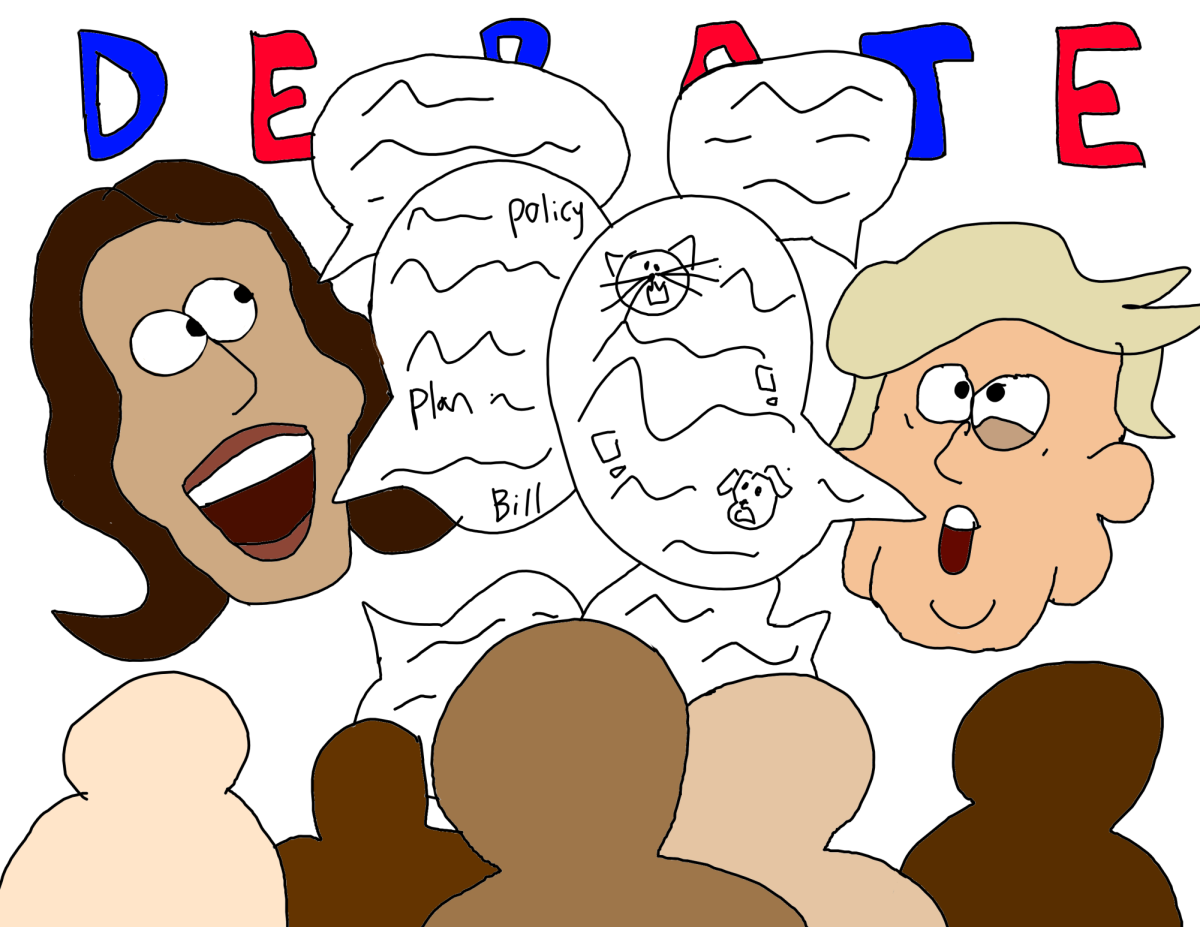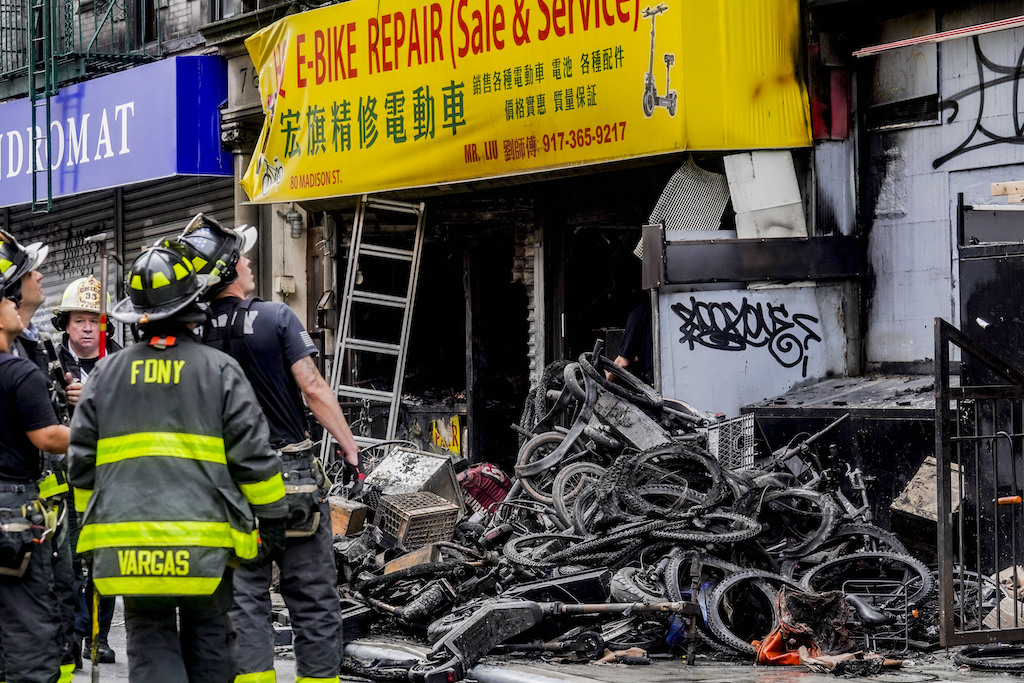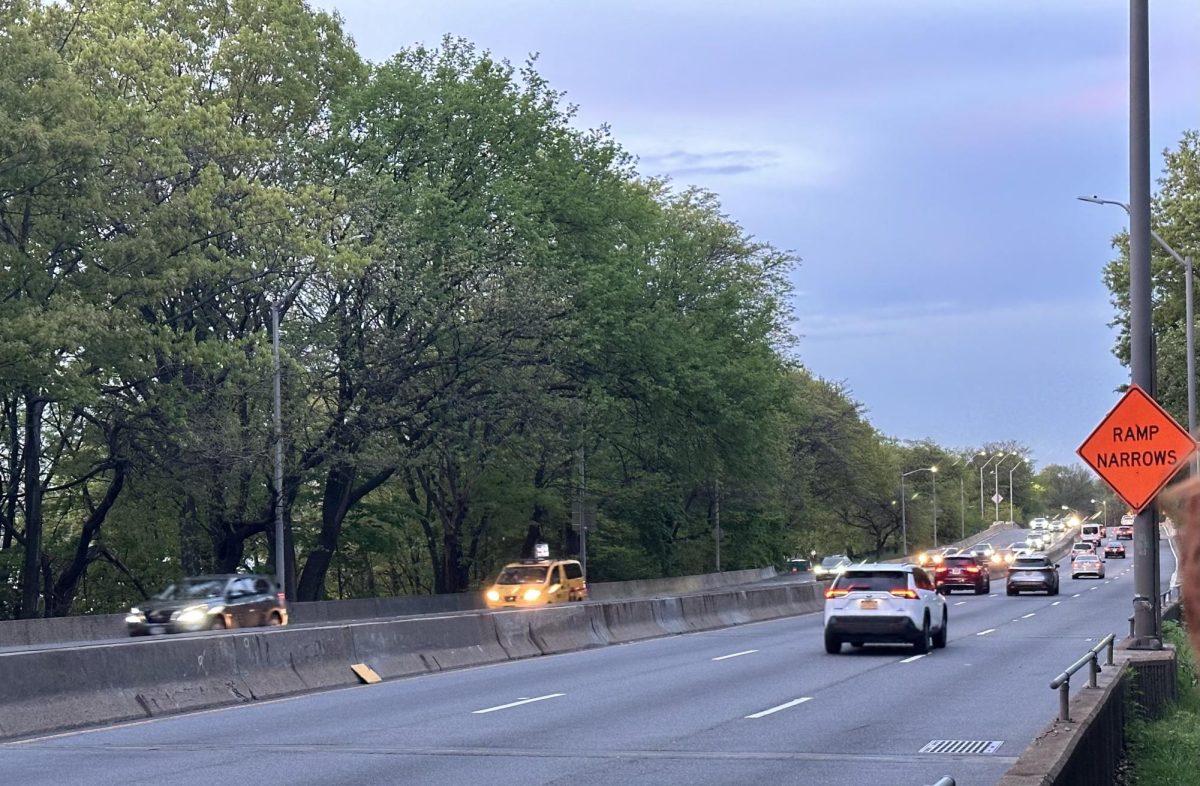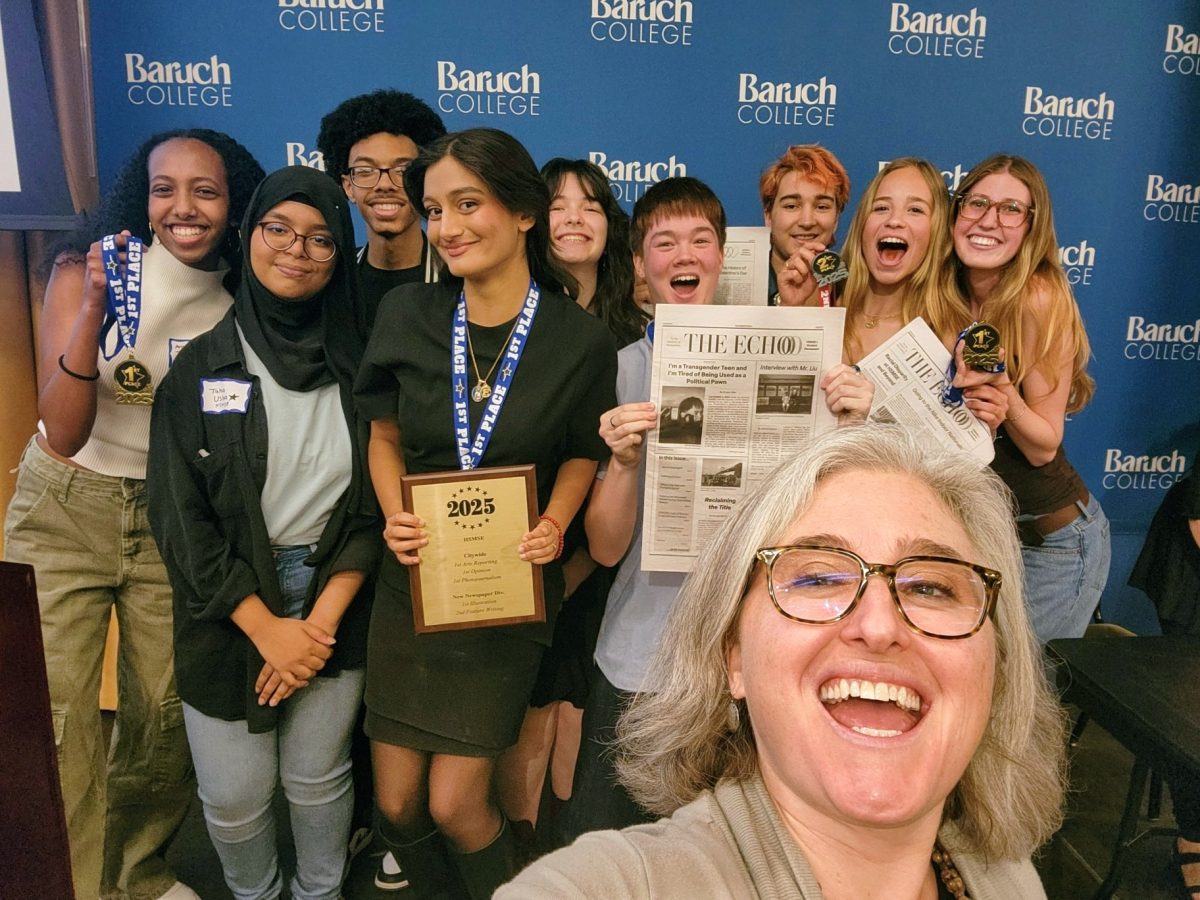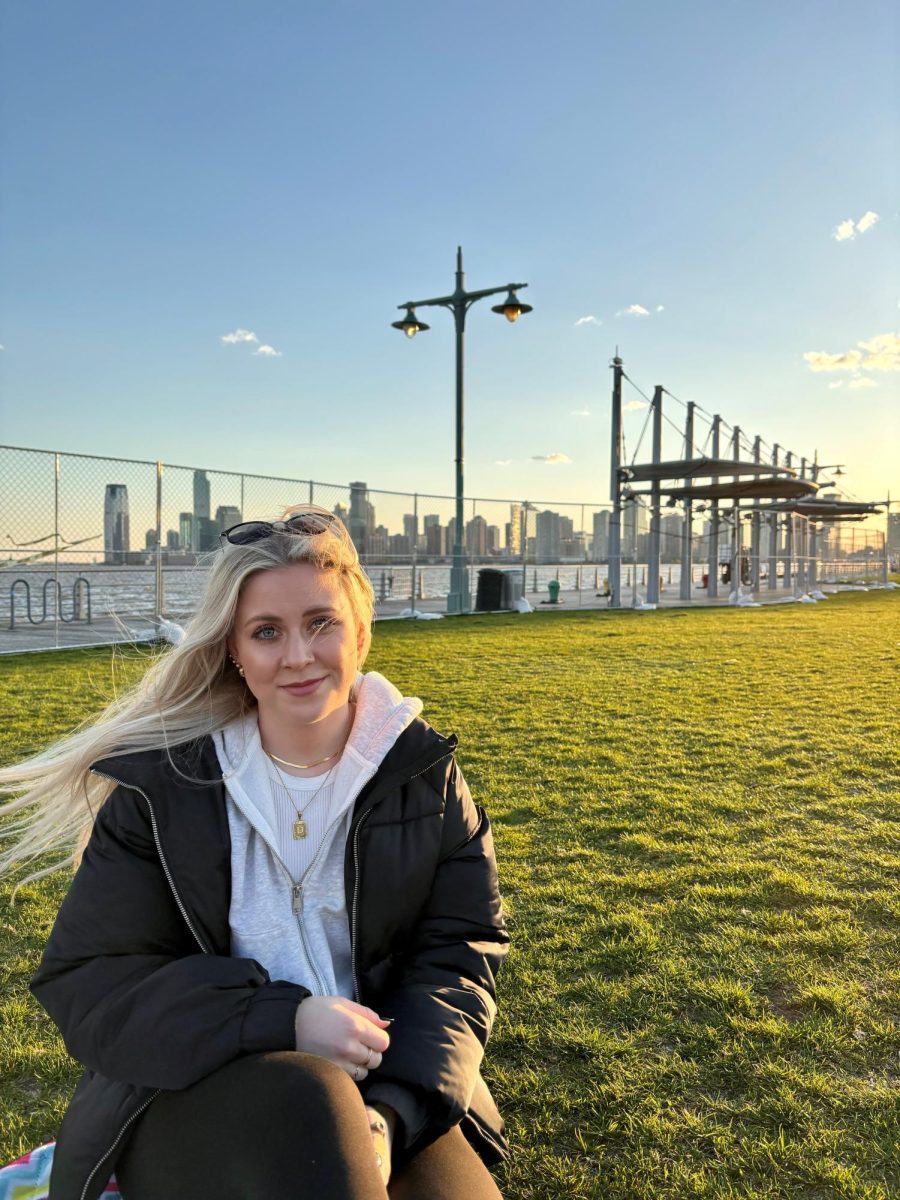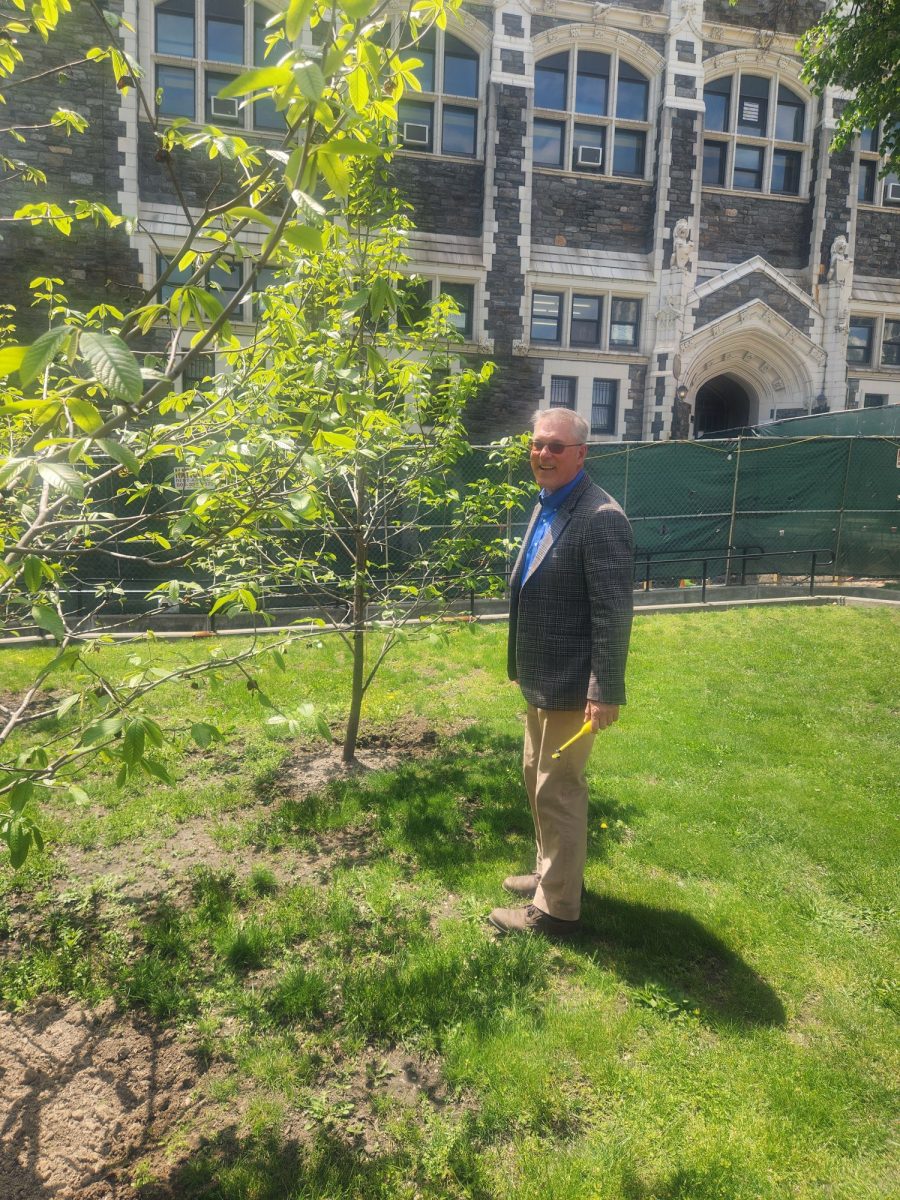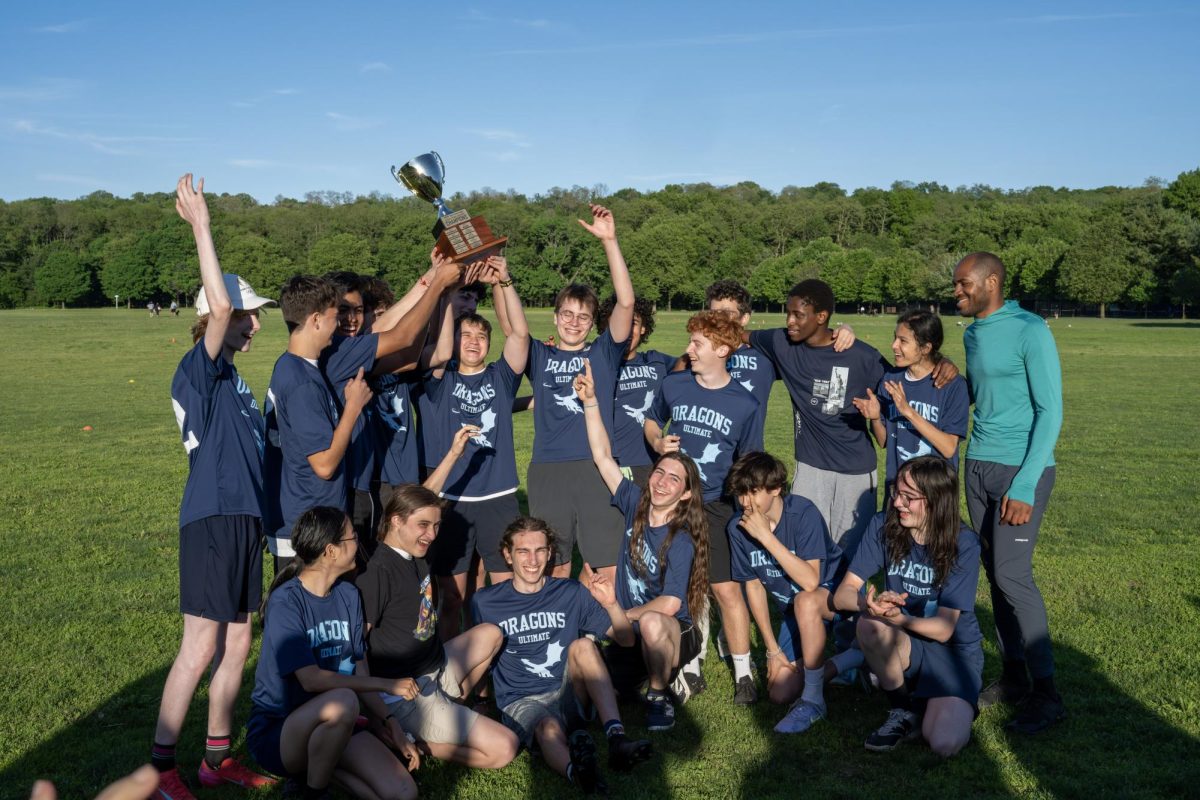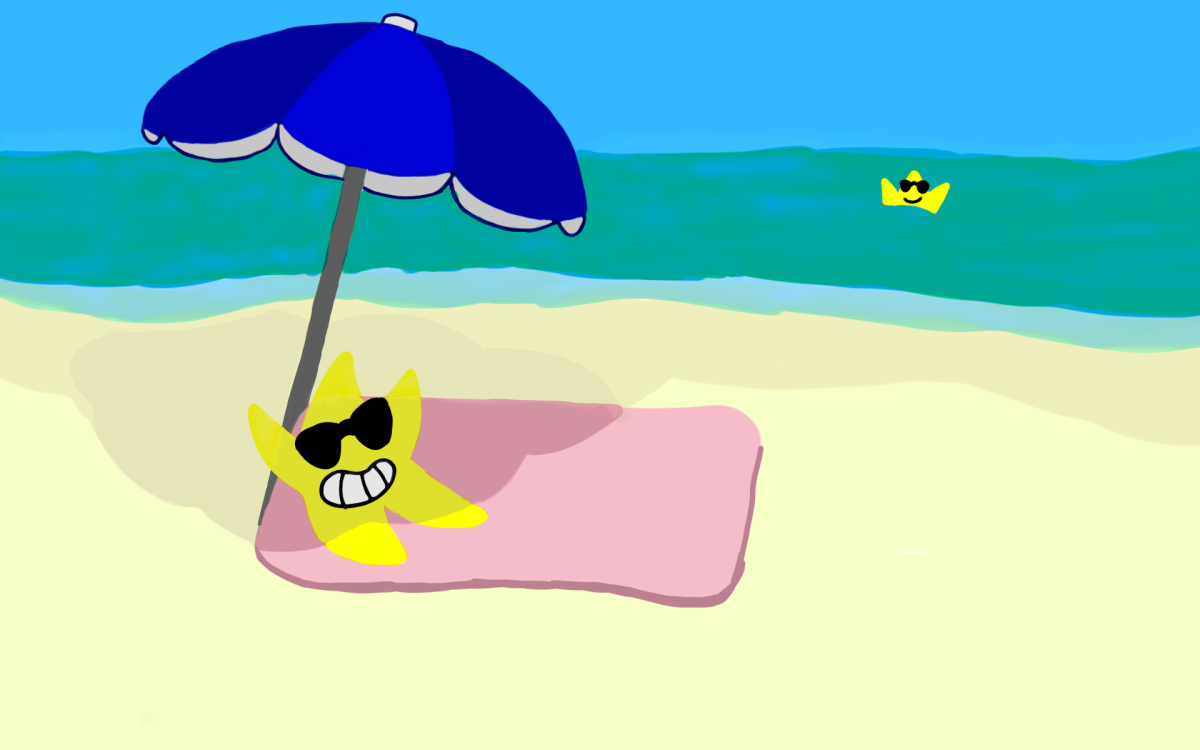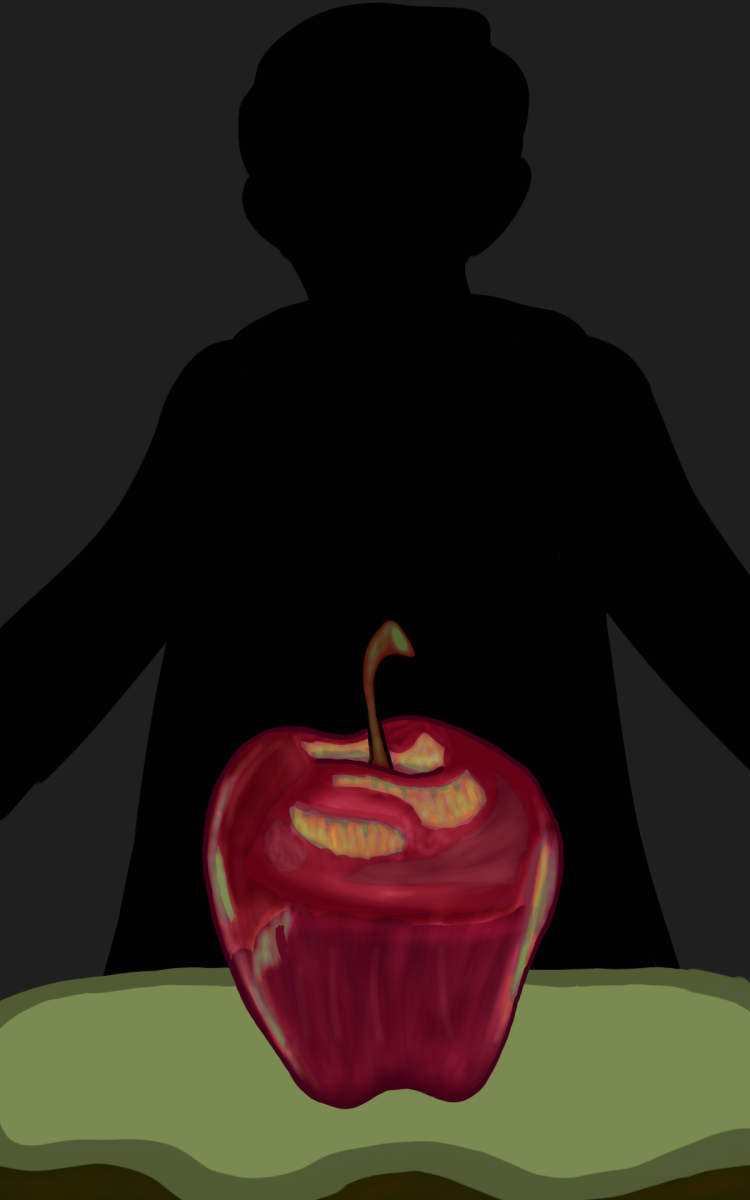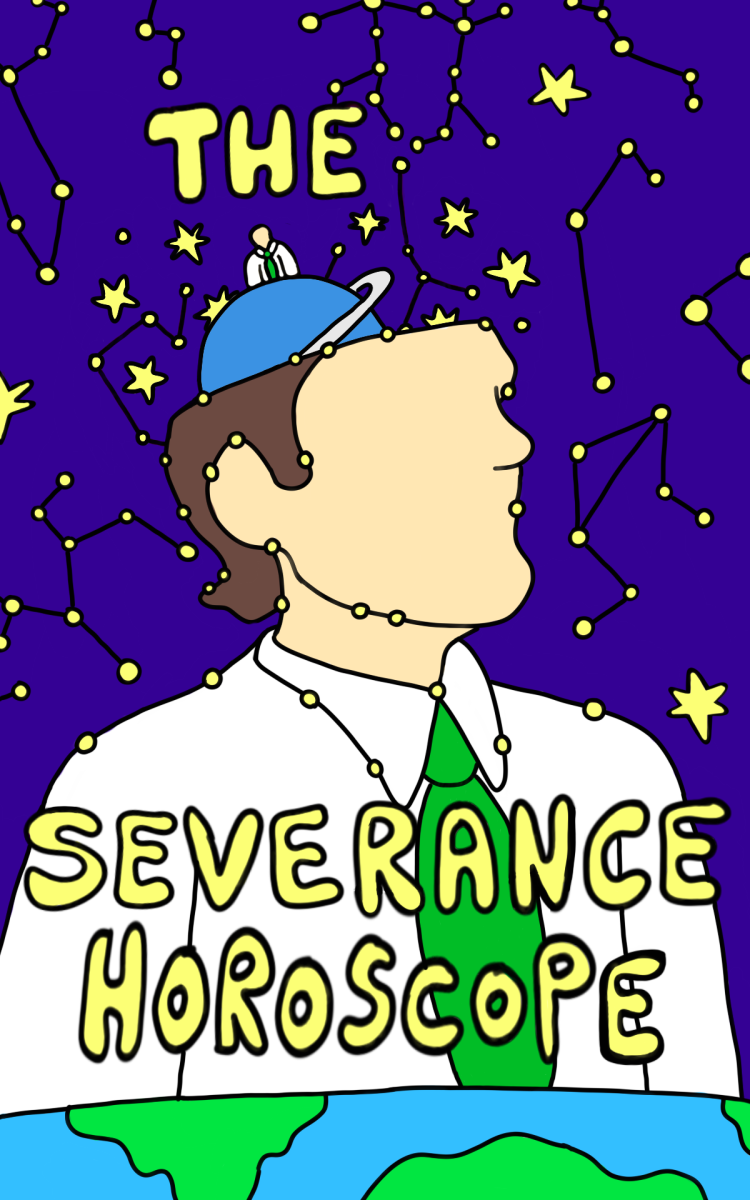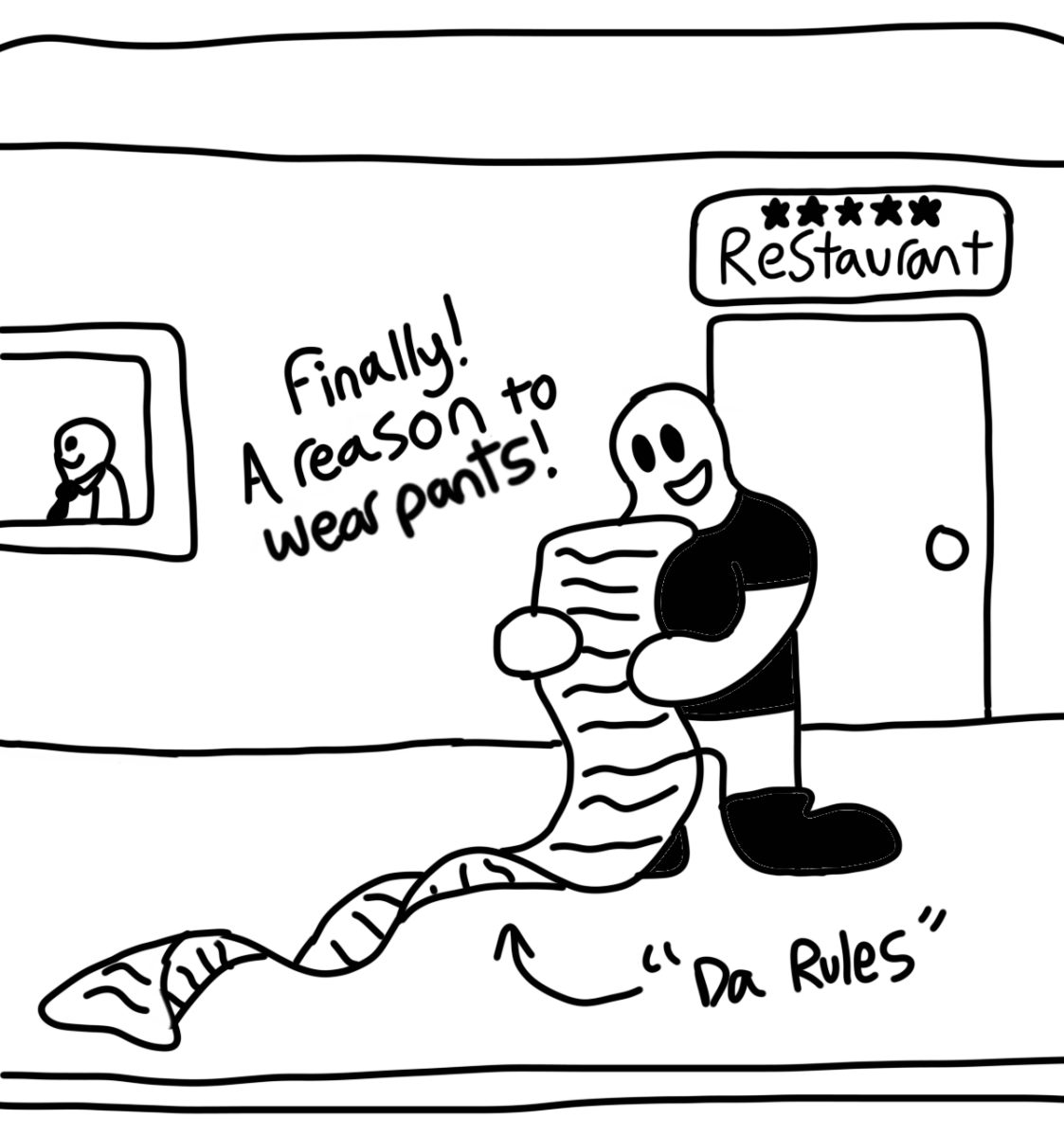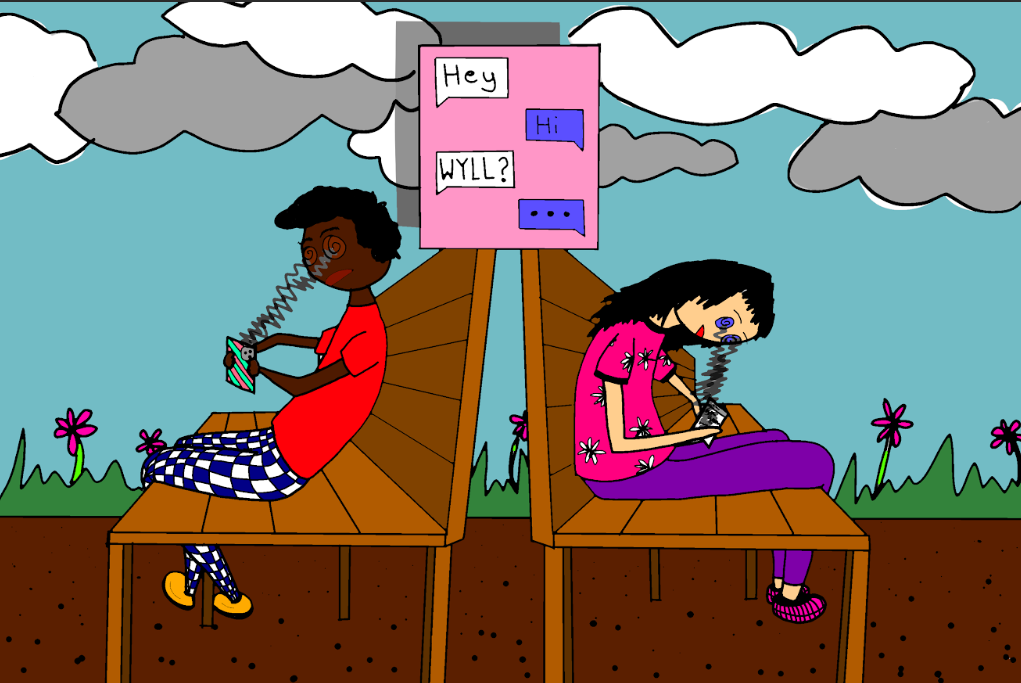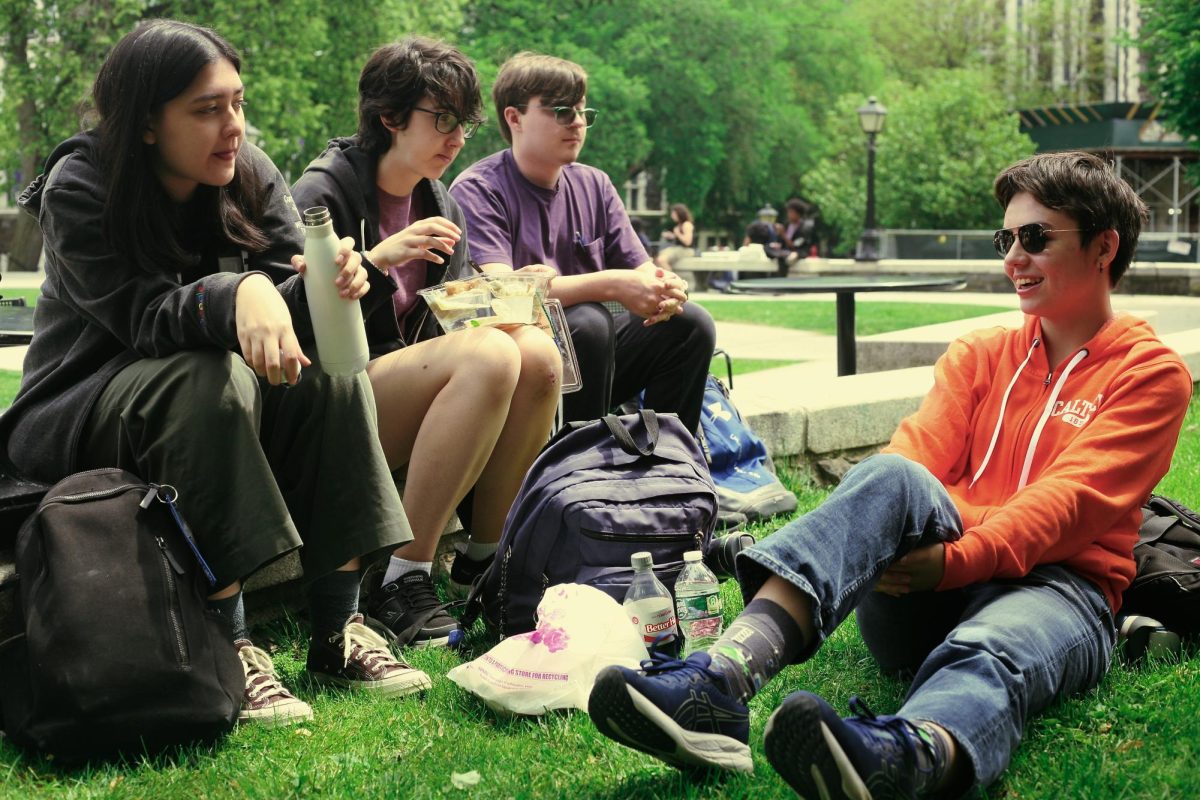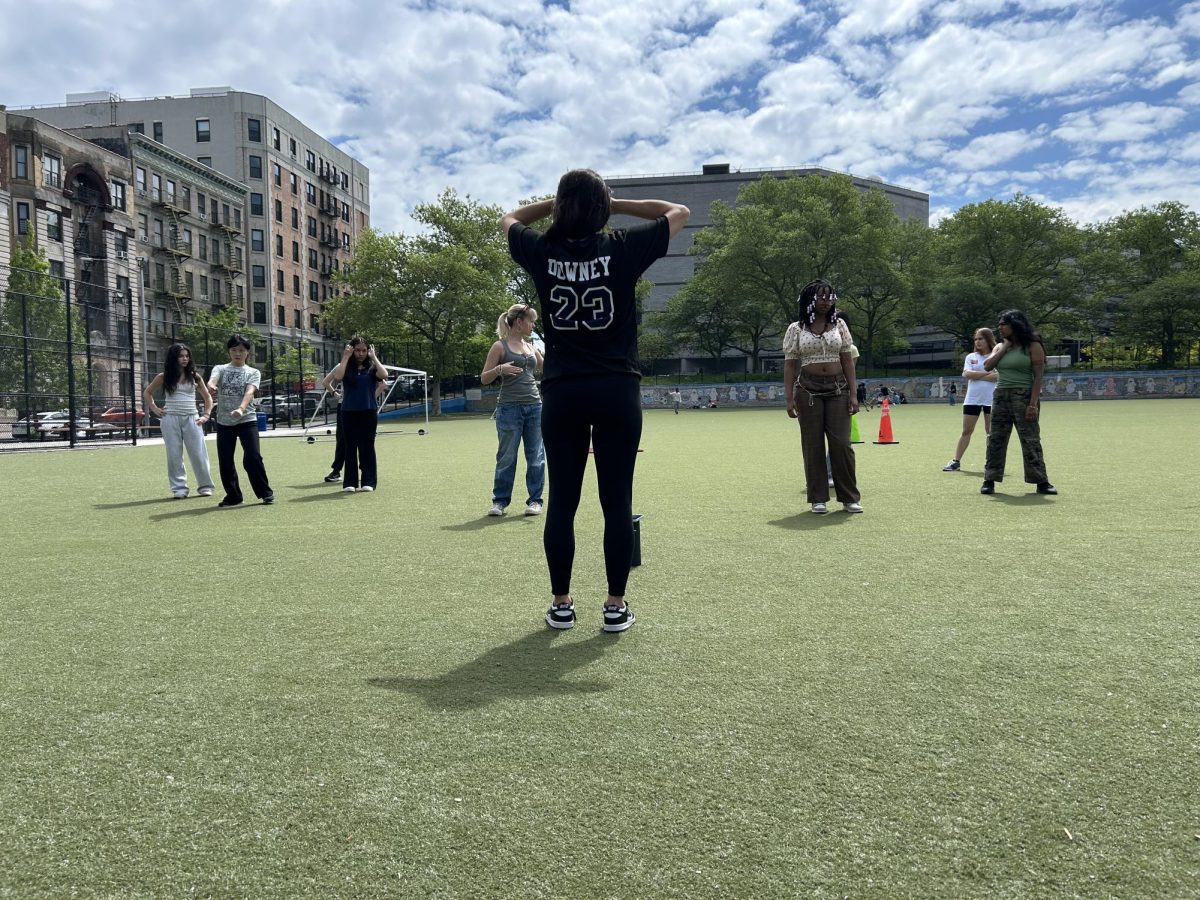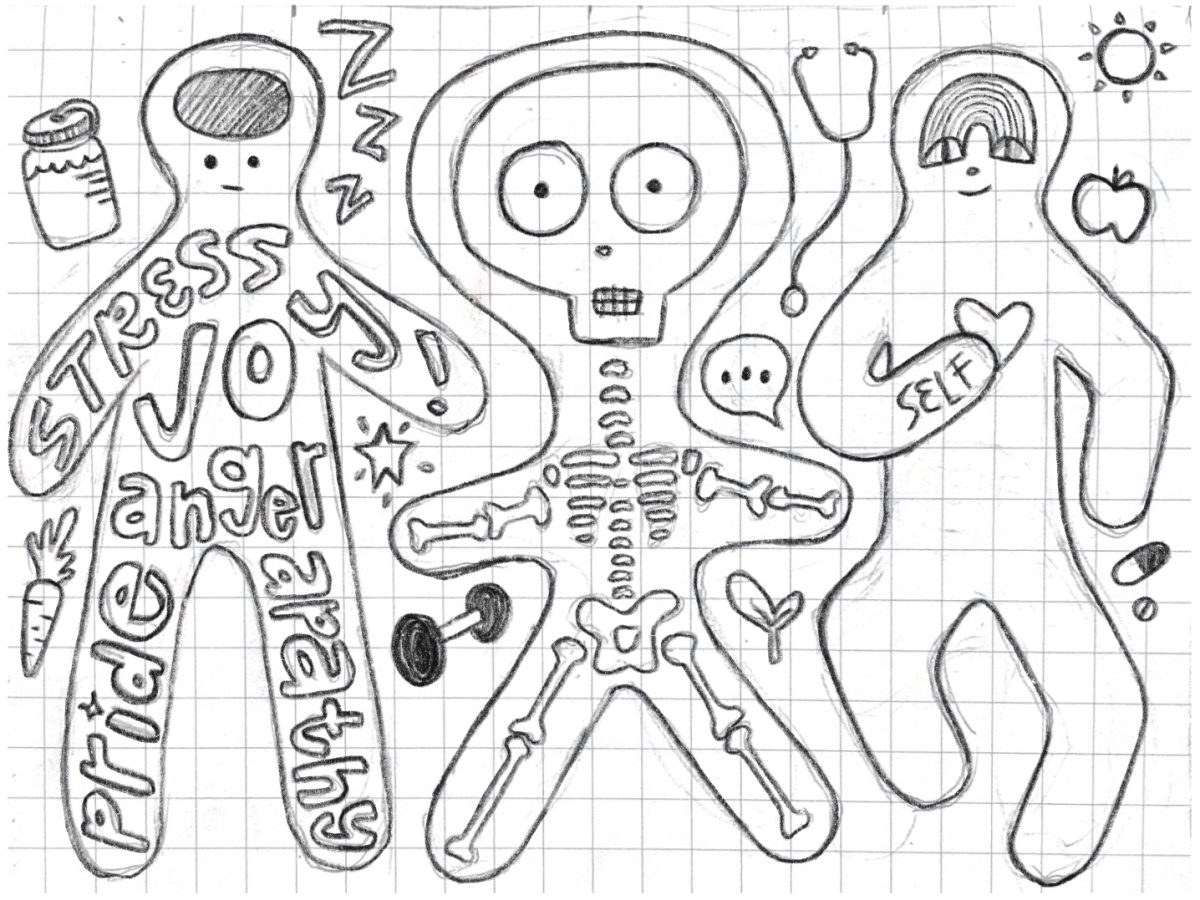This interview has been edited for length and clarity.
May 8, 2025
12:00 PM
The office of CCNY President Boudreau
Pawpaw: “a North American tree (Asimina triloba) of the custard-apple family with purple flowers and an edible green-skinned fruit.”
As we enter Dr. Boudreau’s office, he greets us and immediately directs our attention to our left, where:
VB: As you can see, I have an Echo illustration up on the wall [gestures to the wall].
Soon after, I look down at the orange, spiral-bound notepad in my lap, full of questions about the pawpaws of City College. To begin our interview, I ask:
EG: Why pawpaw trees? Are these your favorite trees? What makes them special? Is there some kind of emotional connection?
VB: I had never had a pawpaw until I had a pawpaw from this tree, but I’ve always liked foraging—as a ten year old kid. There was a story I read, a young adult book about a woman during pioneer times who was escaping. She was running through the woods, and she had been running for days, and she was dying of starvation. Then, she started to smell this really sweet smell, and she realized she was running through a pawpaw grove. They described this fruit, an indigenous American fruit, called the pawpaw. She put it in her pockets and it sustained her, and it just sounded amazing. And so it’s kind of always been in the back of my head. Recently, pawpaws have gotten a lot of attention from Americans who are interested in native species, since pawpaws used to be all over. We’re a little bit north of their natural range, but they’re exactly the kind of thing that would get cleared out when people were building farmlands and plowing. They would sometimes grow along riverbanks and so, as rivers got cleared for parks, they would be cut down. They’re hard to ship, so they don’t have a lot of commercial value—I just got interested in them. When I became president, so Octob—stop there, I’ll give you a little side thing: I also come from a family of seven kids, and when one of us would be bored—I’ll give you a side-bar to my side-bar: My father was an English professor. His specialty was Henry David Thoreau–
EG and KH turn to each other and smile.
VB: And so, as kids, every Sunday—we grew up a little bit north of Syracuse, New York. Every Sunday—if it was raining, if it was snowing, if it was beautiful, my family went on a hike. We were kind of immersed in this. We had fruit trees in the backyard, and the backyard was famous. So, pawpaws, and fruit trees, seemed like a really good thing. And I also think about—now talking not as a kid who grew up and was intrigued by pawpaws and liked to forage, but as a college president, one of the things you think about is: What do you want to leave on a campus? I thought, one of the things I’d love to leave at City College would be a plantation of fruit trees—certainly so that campus could pay attention to them, but also because we’re surrounded by families and children who look at City College and think we’re this institution they don’t get to go to. We have this Halloween Scarefest, right—we did that both so we could have some fun, but also so that children from the community can come on campus and see it as their campus. And the same thing with the fruit trees. Were you on campus when we cut down the other big tree that was in front of Shepard Hall? We had a tree, where the pawpaws are now. I had just become president, it was raining out, I was sitting at that desk [points to his desk across the room], and my secretary comes in and says, “The elm tree fell down.” I ask, “Was anybody hurt? Was anybody under it?” Nobody knew; we didn’t know for 45 minutes whether somebody was trapped under that elm tree. It was as big as the ones in front of your school. So, identifying trees that are sick and cutting them down is a big priority, but once we cut that down, I was looking at that space, and I thought [grinning]: I could plant some pawpaws.
Dr. Boudreau continues to speak about the other trees of the campus, including pear trees, peach trees, persimmon trees, concord grape vines, pie cherry trees, beech plum trees, nectarine trees, fig trees, medlars, as well as his plans for bringing chestnut trees and passionfruit vines. He shares: “The idea is that every year, we’re going to plant a couple more fruit trees, and so what I will leave is a campus that has fruit all over, as an invitation for people. So, if you’re enrolled in high school, you will probably not be here when any of the fruit is fruiting—
EG chuckles, attempting to hide the wave of realization (and sadness) brought upon her, which is diminished as soon as Dr. Boudreau says:
—Except for the pawpaw [smiling].
EG: Ohh
KH laughs.
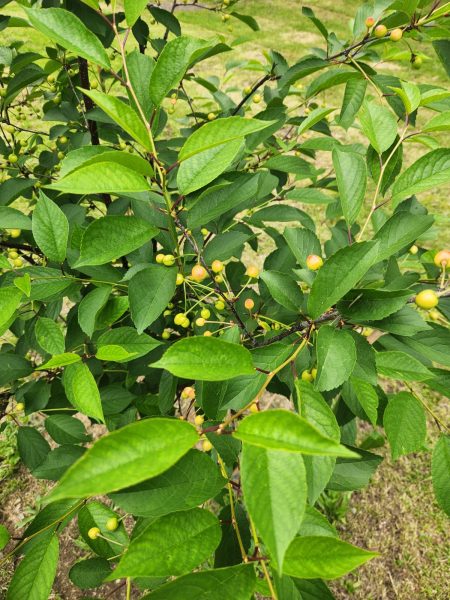
Photo by President Boudreau.
VB: And the secret of the pawpaw—did you like the—
KH: I loved it. I was really surprised [alluding to last September, when Dr. Boudreau brought Ms. Hesseltine a pawpaw to try].
VB: Yeah. You don’t pick a pawpaw. You have to wait for it to fall. The secret is, the ones that look like they’re rotting, you slice them open and they’re just incredibly sweet. They’re really delicious. So that’s a very long answer to a very short question.
Across from me on the coffee table, I spot two yellow devices, like electric toothbrushes, but with bees on top of them rather than bristles. I figure that these are the pollinating sticks that Dr. Boudreau’s secretary, Marie, had previously told me about, but I cannot seem to imagine how they would work in pollinating pawpaw trees. With a grin, I ask, “How do these work?” Dr. Boudreau says, “I’m gonna show you, if you’ve got time.” Immediately, without thinking, I respond, “Yeah, of course,” for the whole idea for this interview came about after Ms. Hesseltine spotted Dr. Boudreau, wearing his suit, as usual, standing near the notorious pawpaw trees and carefully moving this magical device about each individual pawpaw blossom.
Dr. Boudreau continues, explaining that “the yellow dust” atop the rubber bee “is actually pawpaw pollen. The problem with growing pawpaws at the Northern edge of their range is that the pawpaw blossoms are not sweet; you smell a peach blossom, or an apple blossom—it’s beautiful, it’s sweet, it’s fragrant, it smells like the fruits do, so the bees naturally come. Pawpaws smell almost rotten, in fact, sometimes, when people think that their pawpaws are not getting pollinated enough, they’ll hang, like, chicken wings—you know this?”
EG: Yeah [smiling]
VB: You heard about it?
EG: Yeah
KH: Wait, I don’t know about this!
VB: So they would hang rotten things to attract beetles and flies.
KH: Oh! [laughs]
VB: That would get them to pollinate. And a pawpaw tree can’t pollinate itself, another tree has to pollinate it.
So we’ve got five pawpaws, different varieties, and these little things [pointing to the wings of the rubber bee]; you press that [pressing the black button controlling the pollinating stick, causing it to vibrate just like an electric toothbrush], and you just go flower to flower the way a bee does!
KH and EG laugh.
VB: So you go flower to flower, and you also go tree to tree.
EG: Just like little bees.
VB: When we’re done, we’ll pollinate some pawpaws.
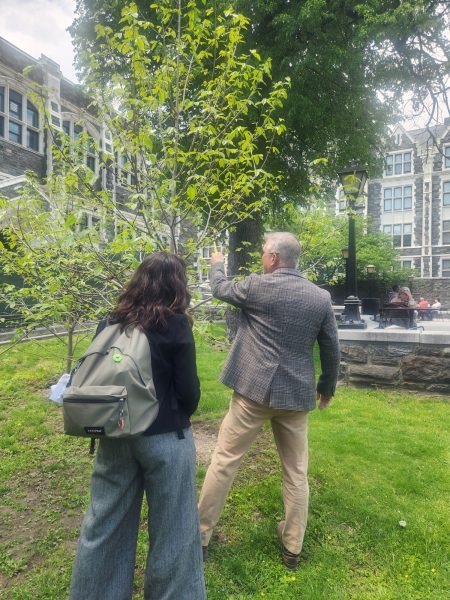
Photo by Ms. Hesseltine.
EG: How often do you pollinate them?
VB: It seemed last year, I was out there almost every day. I have just been so busy this year. So instead, what I have done is I’ve had a couple of really long sessions, but there are also people around here who are excited and will go out. The trees are bigger and have more blossoms on them this year than ever before, and so I’m also kind of hoping that as they grow more and more, they’ll start to attract the bugs that’ll do the pollination without me being there. But last year, we had more pawpaws than we could eat.
EG: So, where do the pawpaws and the other fruits go?
VB [quietly]: Um, I eat them [smiling].
KH and EG laugh once again.
VB: The other thing that’s really nice about these fruit trees is that all of our buildings and groundspeople are so excited about this whole project, and they’re super proud. You know, a lot of times a college president will wave to people, and you say hi, but we’re collaborating on the growth of this fruit. I remember the first year I had pawpaw fruits. There is a woman named Faye who’s one of the more senior buildings and groundspeople; we only had a couple pawpaws, I got them and sort of passed them around, and I went out and she stopped me and goes, “Hey! I’ve been guarding your pawpaws all year long, and you didn’t save a pawpaw for me?” I thought: OK, this really matters to people. So, the C&O Canal is what the Potomac River becomes, and it goes all the way up along the edge of West Virginia and Maryland, and there’s a path that runs the length of the whole thing. 60% of the understory is pawpaws. So [grinning], Faye yelled at me, next weekend, I got in my car, drove to the border of Maryland, came back with a big bag of pawpaws, and then all of the buildings and grounds people came. But, you know, the ones that I prioritize are the public safety officers, the facilities people, the people in here that are excited, and after that, it’s whoever wants it. A lot of the time, I’ll go and be gathering pawpaws—especially on the weekend—and there’s someone who’s sitting on a fence, and I’ll say [smiling], “Hey, did you ever have a pawpaw?” and nobody knows what they are.
I liked, as a kid, the idea of tasting a new fruit that I’d never tasted before—it’s like seeing a color that didn’t exist, you think you know what’s out there. I also did a lot of my research in Southeast Asia, so mangosteen and durian, and lanzones, and all these fruits that were different from anything we have here, I find so exciting. And the pawpaw is like a new addition; it’s the biggest indigenous American fruit.
EG nods in agreement.
VB: You know this. You did your research, that’s good!
Just as Dr. Boudreau finishes his sentence, Dee, who works in the Administrative Building, enters and informs Dr. Boudreau of visitors. Just as she is about to leave, she peeks her head back into the room and asks: “You bring a bumble-bee?” Dr. Boudreau exclaims, “Two!”, and she closes the door in approval. Once the door is closed, he whispers: “She actually bought the bumble-bees, so I’ll tell you: The pawpaws are like the adopted children of my circle.”
EG: I love that!
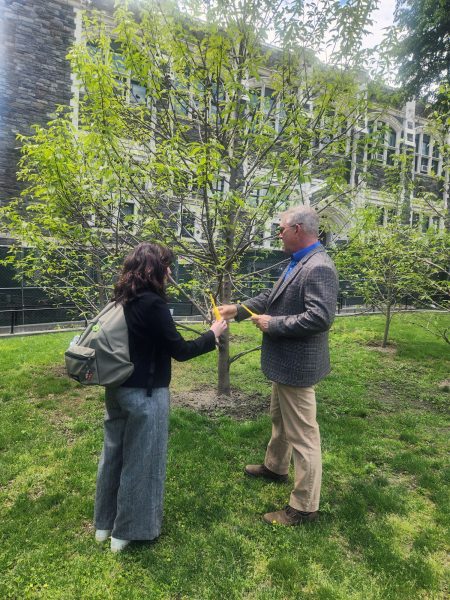
Photo by Ms. Hesseltine.
EG: Do you know when you first brought the pawpaws on campus?
VB: I know exactly when I planted them!
When I became permanent president, 13 months in, they named me to have the full-time job. A couple months after that, there was something called an investiture—that was March 2018. That’s when the pawpaws were planted.
EG: Should we see the pawpaw trees in a certain way? Do they symbolize something? Should they mean something to us, high school students at HSMSE?
VB: Yeah, I think so. We had fences around them. You know why we had fences around them?
EG: To protect them?
VB: Because your classmates are so bad at throwing a football, that when the trees were small, they just kept getting plowed into [laughing]. No, listen—I think that when you plant a fruit tree and it’s not in a private orchard, it’s a gift to whoever is paying attention to it. And the same message that these fruit trees have for people in the neighborhood is for the students in HSMSE. And also, the people on the campus, as well. First of all, pay attention—take stewardship of it, right. So, [under his breath] don’t throw your football at my tree.
KH and EG chuckle.
VB: But it’s also part of your campus, and when I was a kid, I knew that wild strawberries grew in the back of my school; those were my wild strawberries because it was my school. Same thing, right? And the other thing is, you’re going to have opportunities to plant things over the course of your life, and thinking about a plant that provides for people, whether it’s shade, or oxygen, or fruit; it’s part of the message. But more than anything else, I want people—everybody, students in your school—to be able to wander through the campus. Here’s the other thing: If you know there are peaches on south campus, you’ll probably go there! It’s an invitation.
The campus should be open. It should be a place where, if you’re a high school student, it’s all your campus. And I know that getting inside buildings is difficult for students sometimes and there are reasons for that, but the outdoors should be everybody’s place.
After we were finished with our interview, Dr. Boudreau brought us—along with the toothbrush-like pollinating sticks—to the campus’ five pawpaws. He taught us how to use them to pollinate the blooms of the pawpaws, and even allowed us to borrow them so that The Echo newsroom could try. His parting words were:
“Towards your graduation, these [pawpaws] are going to be worth paying attention to.”
